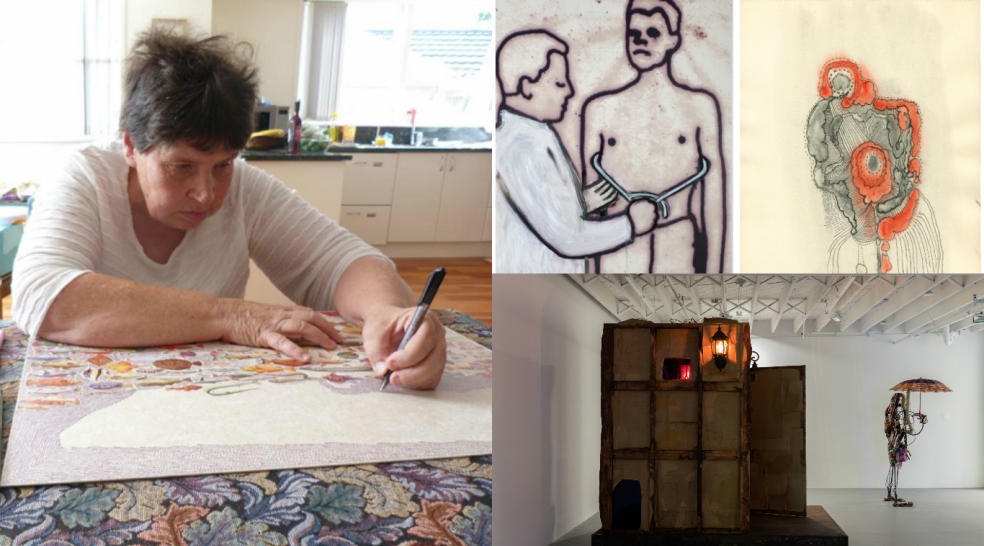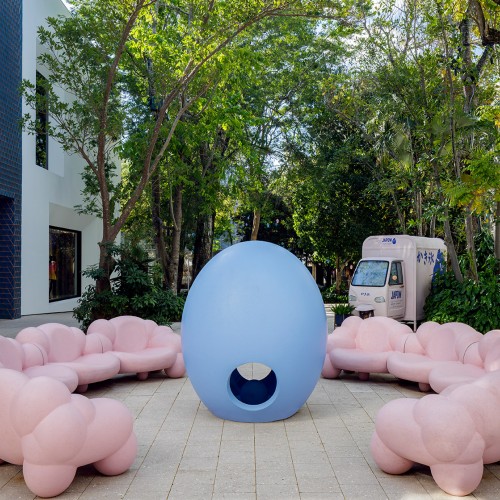While ICA Miami’s summer lineup presents works from three very different artists, they are much more connected than one might initially think. On display now through October 30, the solo exhibitions in the museum’s expansive second floor galleries showcase the rediscovered work of accomplished artist Ida Applebroog; drawings and renderings by Susan Te Kahuranji King; and the site-specific sculptures of Renaud Jerez.
These three shows are connected by shared questions of identity, the role of the artist, and consulting curator Tina Kukielski, who worked closely with chief curator Alex Gartenfeld to develop this season’s program. And as you dig deeper into the show there’s an otherness — an exploration of the past, trapped, or future self — that seems to also characterize this program.
But even more important than a thematic linking, these exhibits highlight the very unique circumstances under which the artists’ creative process has taken place.
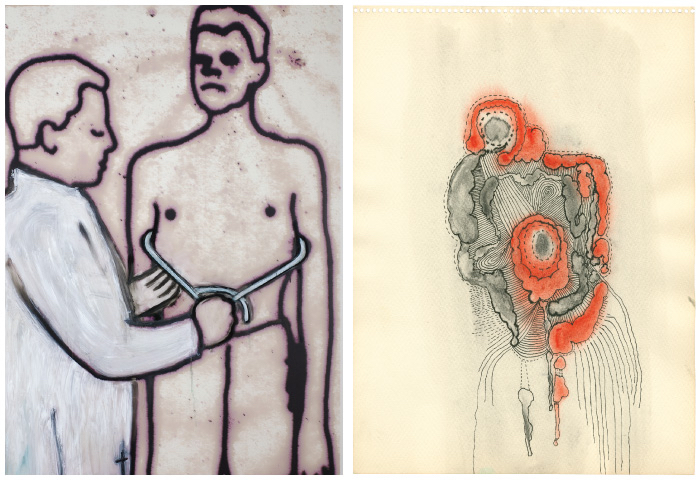
(Ida Applebroog, Left: Catastrophes, 2012. Right: Mercy Hospital, ca. 1969. Courtesy of the Artist and Hauser & Wirth. Photo: Emily Poole.)
In 1969, Ida Horowitz checked into the mental ward at Mercy Hospital in San Diego. A very shy woman, she explained to her studio assistant (in a recent story for Interview Magazine) how the psychiatrist allowed her to stay in her room and draw in lieu of occupational therapy. Weeks later, she emerged from Mercy with 109 intricate drawings, but stashed them away until further notice. She also renamed herself Ida Applebroog, borrowing syllables from her maiden name, Applebaum; and launched a successful art career at the age of 45.
This exhibition, titled “Mercy Hospital” after its place of inception, is Applebroog’s first U.S. solo show in more than 20 years.
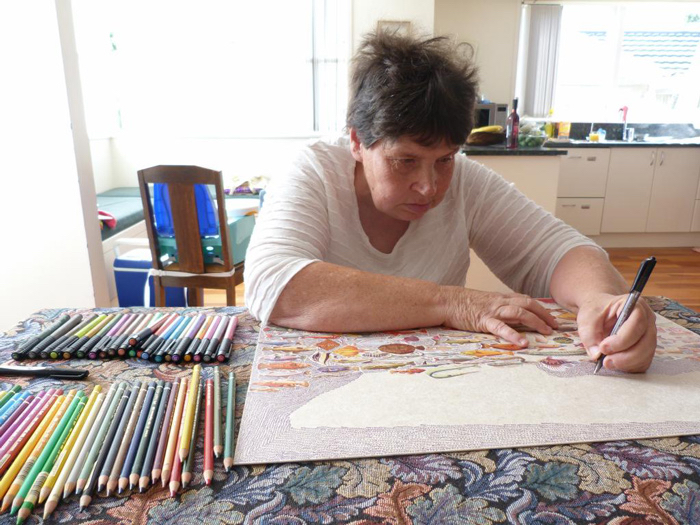
(Susan Te Kahurangi King, 2014. Courtesy of the Artist.)
Susan Te Kahuranji King’s exhibition for ICA Miami is similarly extensive. Once praised by the Times as a rogue animator, “distorting and dissembling [characters] in surreal and psychedelic landscapes,” the artist’s first museum exhibition features approximately 60 drawings — many of which have never been seen before. Kukielski describes learning about King through fellow curator and artist Chris Byrne and from an exhibition at the Outsider Art Fair in 2014. What followed was the steady discovery that the artist, now in her sixties, has been nonverbal since the age of four and is severely autistic.
In a story by the Miami Rail, Kukielski elaborates on King’s earlier drawings, “There are several bodies of work represented in the show, which is really a survey of her work, and the centerpiece of the show are works from the late 60s throughout the 70s when she was in her twenties. These works are quasi-figurative, but in their composition and very dense arrangement, they are kind of like abstract landscapes and there is a real complexity of composition.”
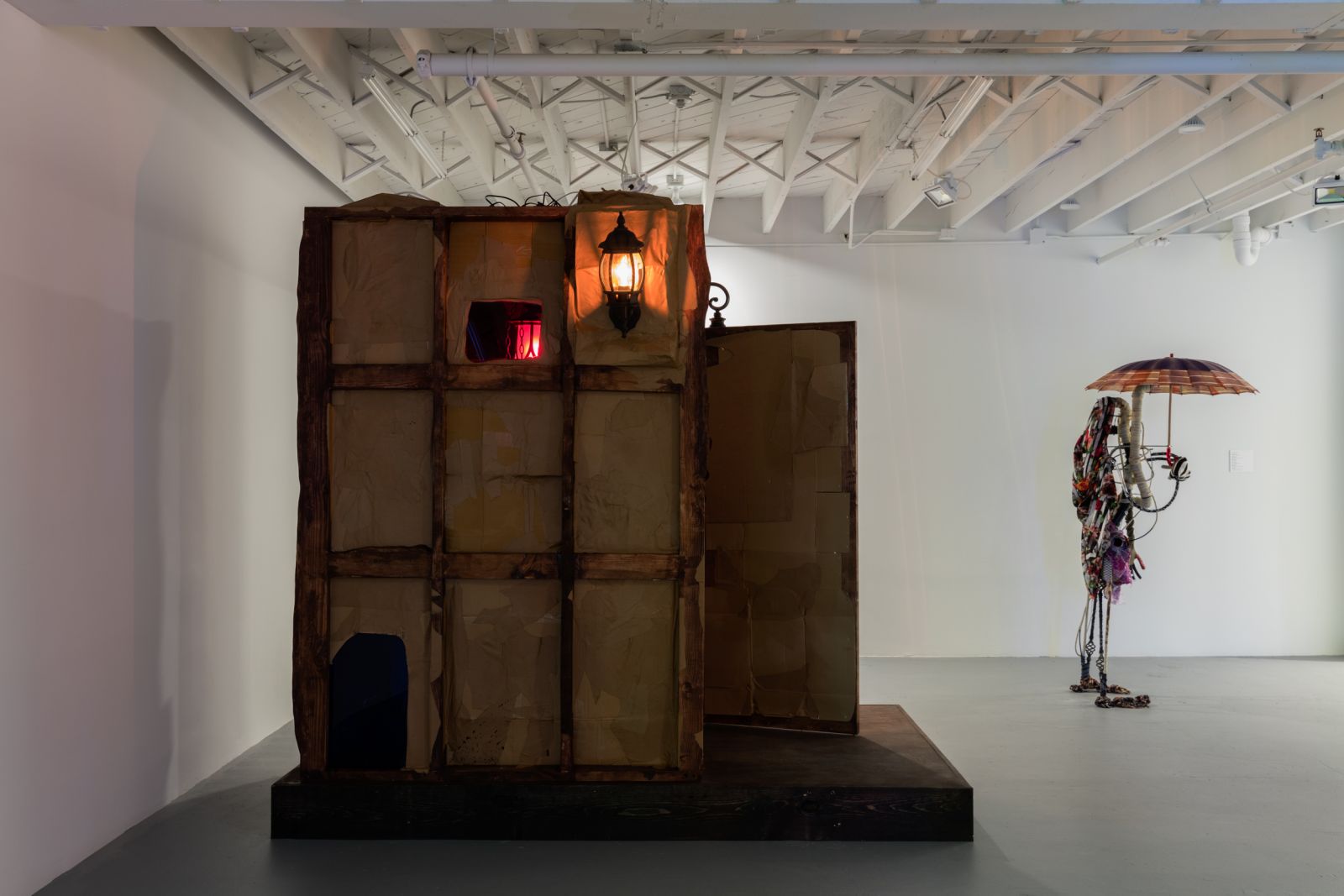
(Installation view: Renaud Jerez at Institute of Contemporary Art, Miami (ICA). July 8 – October 30, 2016. Photo: Fredrik Nilsen Studio.)
Utilizing a completely different medium than both Applebroog and King, Renaud Jerez is a Berlin-based artist represented by Galerie Crèvecoeur in Paris. For his first exhibition in the U.S., he will present a site-specific installation of new work at ICA Miami that builds upon his evolving language of innovative and apocalyptic forms.
It’s worth wondering whether the artist envisions a dystopian future or is simply creating a mirror image—an alternate reality—of present times. Otherworldly and eerily fragile-looking, Jerez’s sculptures feel uncomfortably familiar in a way that asks audiences to reexamine technology, science, the environment, their bodies, and the every day micro-aggressions that challenge humanity.
Ida Applebroog, Susan Te Kahuranji King, and Renaud Jerez are on view through October 30th at Institute of Contemporary Art Miami 4040 NE 2nd Avenue.

